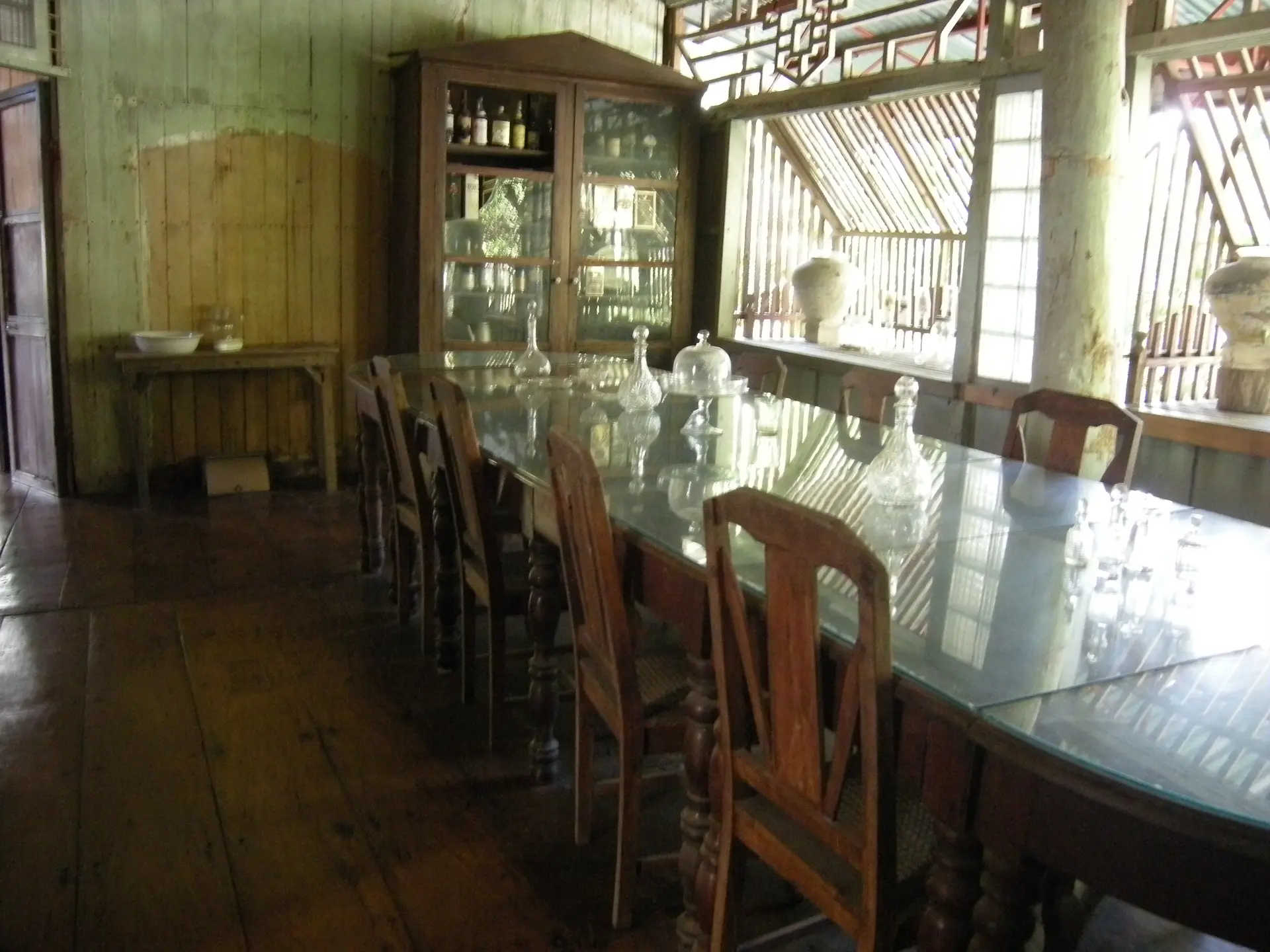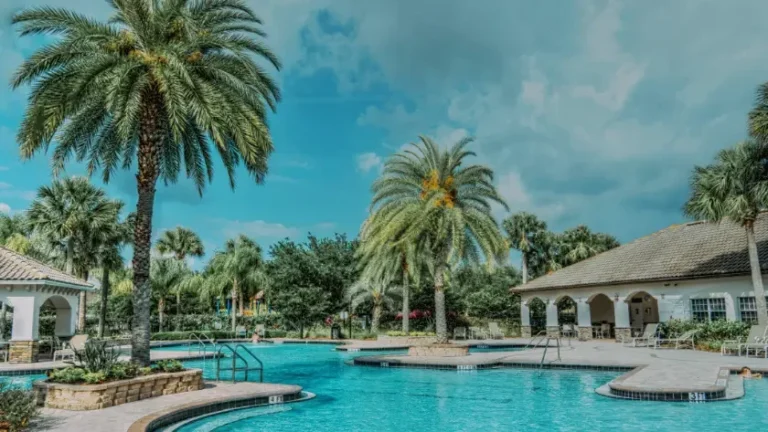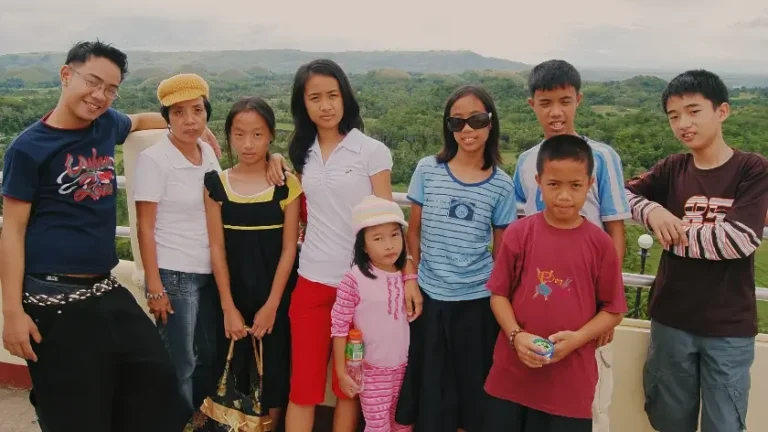Loay Bohol: Hidden Heritage Town & Complete Travel Guide 2025
Just 20 kilometers from bustling Tagbilaran City lies one of Bohol’s most authentic heritage treasures—a coastal town where Spanish colonial architecture stands virtually untouched by mass tourism. Loay Bohol’s 1815 coral stone church overlooks the Loboc River mouth, while ancestral houses and defensive watchtowers tell stories spanning four centuries of Philippine history.
Unlike the crowded Chocolate Hills or busy Panglao beaches, Loay offers intimate cultural encounters in a setting that feels frozen in time. With only 47,878 residents spread across 113 square kilometers, this municipality preserves Bohol’s colonial legacy while providing stunning natural backdrops from coastal mangroves to panoramic hilltops.
Why Loay Deserves a Spot on Your Bohol Itinerary
Loay Bohol represents authentic heritage without the tourist crowds found at major attractions. This coastal municipality sits strategically at the Loboc River’s mouth, where Spanish colonizers established one of Bohol’s most architecturally significant religious complexes. The town’s elevation changes—from sea-level mangroves to 200-meter hills—create diverse landscapes within a compact area.
Historical Significance: Founded in 1603, Loay became a crucial Spanish colonial outpost defending against Moro raiders. Its coral stone architecture survived major earthquakes, including the devastating 2013 Bohol quake that destroyed many heritage structures elsewhere on the island.
Cultural Authenticity: Unlike restored tourist sites, Loay’s heritage buildings remain lived-in community spaces. The church serves active congregations, ancestral houses shelter descendant families, and the plaza hosts local festivals—providing genuine cultural immersion rather than museum experiences.
“Visiting Loay felt like stepping back 200 years—the church frescoes are incredible and there were no tour buses in sight!” – Maria Santos, Heritage Enthusiast ⭐⭐⭐⭐⭐
Accessibility Advantage: Located on the main Tagbilaran-Loboc route, Loay Bohol integrates seamlessly into countryside tour itineraries. Most visitors can explore all major attractions in 2-3 hours, making it perfect for half-day heritage focused excursions.
Best for: 🏛️ Heritage enthusiasts | 📷 Architecture photographers | 🌿 Cultural immersion seekers | 👨👩👧👦 Educational family trips
Complete Loay Heritage Walking Tour
Loay Bohol’s compact town center allows easy walking between major attractions, with the historic church complex serving as the natural starting point. The recommended route covers 2.5 kilometers of gentle terrain suitable for all fitness levels, typically taking 3-4 hours with photography and exploration time.
Loay Church (Santissima Trinidad) – 60-90 minutes
Architecture Marvel: This 1815 coral stone masterpiece exemplifies Spanish colonial religious architecture adapted to tropical conditions. The church’s elevated position—built on a natural plateau—provided defensive advantages while creating dramatic visual impact approaching from the coastal road.
Artistic Treasures: Interior frescoes covering the dome and ceiling depict biblical scenes painted in vibrant blues, golds, and earth tones. These artwork survived the 2013 earthquake that damaged many Bohol churches, making Loay’s frescoes among the island’s best-preserved colonial religious art.
Architectural Details:
- Construction: Coral stone blocks quarried from nearby coastal areas
- Dimensions: 45-meter length with 12-meter central nave height
- Restoration: Post-earthquake reinforcement completed 2015-2017
- Bell Tower: Separate coral stone structure dating to 1820s
Photography Tips: Best exterior shots from the coastal road approach during 4-5 PM golden hour. Interior photography permitted without flash—bring high-ISO capable camera for frescoes.
Cultural Context: Active parish serving 8 barangays with Sunday masses in Cebuano and English. Visitors welcome during non-service hours (8 AM-5 PM daily).
Clarin Ancestral House – 45-60 minutes
Living Heritage: This 1840 Filipino-Spanish colonial residence remains occupied by Clarin family descendants, offering rare opportunities to experience heritage architecture as functioning family home rather than static museum.
Architectural Features:
- Foundation: Coral stone blocks providing earthquake resistance
- Structure: Rough-hewn hardwood posts supporting elevated design
- Flooring: Wide narra and molave planks (some original)
- Roof: Traditional nipa thatch with Spanish-influenced pitch angles
Family Legacy: The Clarins played significant roles in Loay’s political development during American colonial period. Family memorabilia includes photographs, documents, and furniture spanning five generations of local leadership.
Visiting Protocol: Private residence requiring respectful approach. Family members often available for informal tours when present—small donations (₱50-100) appreciated for maintenance.
Conservation Status: Generally well-maintained despite termite damage to ceiling beams. Represents one of Bohol’s finest examples of 19th-century Bahay na Bato architecture.
Loay Bohol Plaza Complex & Coastal Walk – 30-45 minutes
Community Heart: This understated plaza complex reflects Filipino town planning principles with open green space connecting civic, religious, and educational functions. The coastal setting provides scenic backdrop often missing from inland heritage sites.
Key Buildings:
- Public School: Single-story coral stone structure in restrained classical style
- Archdiocesan Archive (under renovation): Two-story building designated to house Spanish-era documents from 38 Bohol parishes—potentially becoming significant research center
- Virgin Mary Emblem: Architectural detail on archive building reflecting religious heritage integration
Coastal Walkway: Extends 200 meters along Loboc River mouth with mangrove views and occasional dolphin sightings during high tide. Early morning (6-8 AM) offers best wildlife observation opportunities.
Local Activities: Plaza hosts evening basketball games, weekend markets, and festival celebrations. Visitors often welcome to observe community life during these informal gatherings.
Loay Watchtower (Villalimpia) – 30-45 minutes
Historical Defense: This coral stone watchtower represents Bohol’s 17th-century coastal defense network against Moro raiders from the southern Philippines. Strategic positioning allowed visual communication with similar towers along Bohol’s coastline.
Access Details: Located in Barangay Villalimpia, 2.5 kilometers from town center via coastal road. Accessible by tricycle (₱50-80 round trip) or included in bangka tours from Loboc River.
Current Condition: Weathered but structurally sound coral stone construction. Surrounded by regenerating mangrove forest creating atmospheric historical setting.
Maritime Context: Best viewed from water during Loboc River cruise extensions. Many operators can include watchtower stop with advance request (additional ₱300-500 per boat).
Photography Value: Dramatic compositions possible with mangrove foreground and Loboc River estuary background. High tide timing (check local tide charts) provides best reflections.
🏛️ Book Heritage-Focused Day Tour
📍 Includes Loay Church, ancestral house & watchtower
🚐 Private transport + knowledgeable cultural guide
📚 Access to normally closed heritage sites
⏰ Limited cultural tours available – book ahead!
👉 [Reserve Heritage Experience]
Himontagon Hills: Loay’s Natural Crown
Scenic Overview: Rising 200 meters above sea level, the Himontagon Hills provide Loay’s most dramatic natural attraction with panoramic views extending across central Bohol to distant Camiguin Island on clear days. These rolling limestone hills offer accessible hiking just 20 minutes from Loay town center.
Trekking Options:
- Easy Trail (45 minutes): Paved road to main viewpoint suitable for all ages
- Moderate Hike (90 minutes): Ridge trail through secondary forest with multiple viewpoints
- Challenging Route (2.5 hours): Complete hill traverse with local guide required
Best Viewing Times:
- Sunrise (5:30-6:30 AM): Clear views across Bohol interior with Chocolate Hills visible on horizon
- Late Afternoon (4:00-5:30 PM): Golden light on Loboc River valley and coastal areas
- Clear Days: Camiguin Island visible 150 kilometers northeast (20-30% of visits)
Flora & Fauna: Secondary forest supports 40+ bird species including Philippine tarsiers (occasionally spotted), native orchids, and fruit trees. Local guides can identify medicinal plants traditionally used by Loay residents.
Facilities: Basic comfort room and covered waiting area at main viewpoint. Bring water and snacks—no commercial facilities on hills.
Access Transport: Tricycle from Loay plaza (₱150-200 round trip including waiting time) or included in private heritage tour packages.
Heritage Tour Logistics & Practical Information
Recommended Duration: Half-day (4-5 hours) combining all major attractions with leisurely pace. Full-day options available when combined with Loboc River activities or Baclayon Church visits.
Transportation Options:
- Public Transport: Ceres bus from Tagbilaran (₱25, 45 minutes) with tricycle connections within Loay
- Private Vehicle: Rental car or motorcycle provides flexibility for photography stops
- Tour Packages: Heritage-focused tours available through local operators (₱2,500-4,500 per person)
- DIY Approach: Feasible with basic Cebuano phrases and offline maps
Entry Fees & Costs:
- Church: Free (donations welcome)
- Ancestral House: ₱50-100 suggested donation
- Watchtower: Free access
- Himontagon Hills: ₱20 environmental fee
- Tricycle Transport: ₱200-400 for town attractions
- Guide Services: ₱800-1,200 for cultural context
Best Visit Timing:
- Weekdays: Fewer visitors, better photography opportunities
- Sunday Morning: Experience active church community during mass
- Dry Season (Dec-May): Clearest hill views and easiest watchtower access
For complete Bohol transport planning including ferry schedules and airport transfers, check our comprehensive [Bohol Transportation Guide].
Where to Stay Near Loay Bohol
Tagbilaran City Base (20 minutes to Loay): Widest accommodation selection with heritage sites accessible as day trips. Downtown hotels provide easy access to morning buses and evening dining options.
Budget Options (₱1,200-2,500/night):
- GT Hotel Balamban: Clean rooms with AC, walking distance to Ceres bus terminal
- OYO 506 Cecilia’s Inn: Modern amenities in restored heritage building
- Casa Rosario Hotel: Family-run property with cultural tour arrangements
Mid-Range Comfort (₱2,500-5,000/night):
- Bohol Tropics Resort: Garden setting with pool, heritage tour desk
- Plaza Marcela Hotel: Downtown location with colonial-style architecture
- The Peacock Garden: Boutique property with cultural immersion programs
Upscale Heritage (₱5,000-12,000/night):
- Bohol Beach Club: Panglao resort with cultural day tour packages
- Amarela Resort: Sustainable luxury with heritage site partnerships
- Flower Garden Resort: Spa resort offering cultural wellness experiences
Alternative: Loboc Accommodation (15 minutes to Loay): Riverside resorts providing nature immersion with easy heritage site access.
Booking Strategy: Reserve 1-2 weeks ahead during dry season. Many properties offer heritage tour packages with transportation and guide services included.
Browse complete accommodation options with live availability and instant booking through [Booking.com] or [Agoda] affiliate partners.
Nearby Heritage & Cultural Attractions
Baclayon Church (15 minutes): The Philippines’ second-oldest church (1596) with adjacent museum housing Spanish colonial artifacts. Combines perfectly with Loay for comprehensive heritage tour.
Loboc Church & River Cruise (10 minutes): Historic church complex with famous floating restaurant experience. Many visitors combine Loay heritage sites with afternoon river cruise.
Blood Compact Shrine (25 minutes): Historical marker commemorating 1565 Spanish-Filipino friendship treaty. Quick stop when traveling between Loay and Tagbilaran.
Chocolate Hills Complex (45 minutes): While completely different in character, many heritage enthusiasts appreciate geological wonders after cultural immersion. Consider full-day combinations.
Suggested Heritage Trail: Loay Church → Baclayon Church → Loboc heritage sites → Blood Compact Shrine → return via scenic coastal route. Total distance: 65 kilometers of compelling cultural sites.
Discover more heritage attractions and create custom itineraries with our [Complete Bohol Cultural Guide] covering 15+ historical sites.
Local Festivals & Cultural Events
Sandugo Festival Spillover (July): While main celebrations occur in Tagbilaran, Loay hosts traditional dance presentations and heritage site special openings during festival week.
Town Fiesta (January 15): Feast of Santissima Trinidad features processions, traditional music, and ancestral house tours normally closed to visitors. Best cultural immersion opportunity.
Heritage Month (May): Annual celebration includes guided tours, historical reenactments, and special access to private collections. Advanced booking recommended for exclusive experiences.
Christmas Season (Dec 16-Jan 6): Church displays special nativity scenes and hosts nightly simbang gabi masses. Atmospheric evening visits with traditional carol singing.
Planning Around Events: Festival periods offer enhanced cultural experiences but require advance accommodation booking. Regular programming provides more intimate site access.
Is Loay Right for Your Bohol Experience?
Perfect Match For:
- Heritage Enthusiasts: Travelers prioritizing cultural depth over beach relaxation
- Architecture Lovers: Those appreciating Spanish colonial and Filipino traditional design
- Photography Enthusiasts: Seeking authentic cultural compositions without tourist crowds
- Educational Travelers: Families wanting historical context for Philippines understanding
- Slow Travel Advocates: Visitors preferring intimate cultural encounters over rapid sightseeing
Consider Alternatives If:
- Beach-Focused Vacations: Loay offers limited coastal recreation compared to Panglao or Anda
- Adventure Sports: Minimal diving, surfing, or extreme sports compared to other Bohol areas
- Luxury Tourism: Limited upscale dining and accommodation within town proper
- Large Group Tours: Heritage sites better suited to small group intimate experiences
- Shopping Tourism: Minimal commercial development compared to Tagbilaran or tourist areas
Cultural Sensitivity: Loay remains an active community rather than tourist destination. Respectful behavior around religious sites, private homes, and community spaces essential for positive experiences.
Time Investment: Half-day minimum recommended for meaningful heritage appreciation. Rushed visits miss cultural context that makes Loay special.
Book Your Loay Heritage Adventure
Discover authentic Bohol heritage where Spanish colonial architecture meets living Filipino culture. Loay offers rare opportunities to experience 400 years of history in intimate settings away from mass tourism crowds.
🏛️ Reserve Cultural Heritage Tour
⭐ Expert guides with historical knowledge
🚐 Private transport to all heritage sites
📚 Access to ancestral houses & archives
🌅 Optional Himontagon Hills sunrise experience
⏰ Limited small-group tours – book 1 week ahead!
👉 [Secure Heritage Experience] – Authentic cultural immersion!
Why Book Heritage-Focused Tours:
- Expert Interpretation: Guides trained in Bohol colonial history and architectural significance
- Exclusive Access: Entry to private ancestral houses and normally closed heritage sites
- Cultural Context: Stories and traditions that bring historical sites to life
- Photography Support: Guidance for best compositions and lighting at each location
- Community Benefit: Tour revenue supports heritage conservation and local families
Booking Confidence: Heritage tours operate year-round with 98% completion rate. Weather rarely affects indoor cultural sites, ensuring reliable experiences regardless of season.
Support sustainable heritage tourism by choosing local operators who contribute to conservation efforts. Your visit helps preserve Loay’s cultural treasures for future generations while providing meaningful economic opportunities for local communities.







